Property specification
TypeScript type: PropertySpecification.
This specification allows overriding some attributes of specific ECProperty or define how it's displayed.
Attributes
| Name | Required? | Type | Default |
|---|---|---|---|
name |
Yes | string |
|
overridesPriority |
No | number |
1000 |
labelOverride |
No | string |
No override |
categoryId |
No | string | CategoryIdentifier |
No override |
isDisplayed |
No | boolean | string |
No override |
doNotHideOtherPropertiesOnDisplayOverride |
No | boolean |
false |
renderer |
No | RendererSpecification |
No override |
editor |
No | PropertyEditorSpecification |
No override |
isReadOnly |
No | boolean |
No override |
priority |
No | number |
No override |
Attribute: name
Name of the ECProperty to apply overrides to.
A [*] suffix may be used for array properties to target their items rather than arrays themselves, for example: MyArrayProperty[*]. In this case, only renderer and
editor overrides have effect.
A "*" may be specified to match all properties in current context. The current context is determined based on where the override is specified:
- When used in a content modifier, the properties of the ECClass specified by the
classattribute are used. - When used in one of the content specifications, properties produced by that specification are used.
| Type | string |
| Is Required | Yes |
Attribute: overridesPriority
There may be multiple property specifications that apply to a single property and there may be conflicts between different attributes. The overridesPriority attribute is here to help
solve the problem - if multiple specifications attempt to override the same attribute, the override of specification with highest overridesPriority value is used. The order of overrides
from specification with the same overridesPriority is defined by the order they appear in the overrides list.
| Type | number |
| Is Required | No |
| Default Value | 1000 |
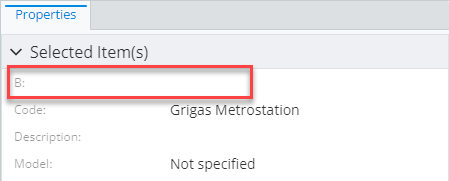
Attribute: labelOverride
This is an attribute that allows overriding the property label. May be localized.
| Type | string |
| Is Required | No |
| Default Value | No override |
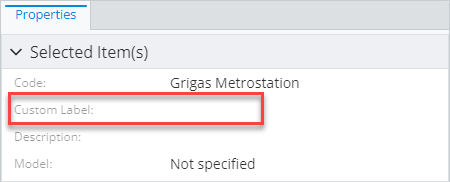
Attribute: categoryId
The attribute allows moving the property into a different category. There are several options:
Reference a category by ID used in
PropertyCategorySpecificationin the current context. The current context contains categories specified in the same content specification or content modifiers that are applied on the same or base ECClass as this property specification.Move to
DefaultParentcategory. This is useful when using with related properties, to avoid putting them inside a special related class category and instead show them next to properties of the source class.Move to
Rootcategory. This is useful when using with related properties, to avoid putting them inside a special related class category and instead show them in the root category.
See property categorization page for more details.
| Type | string | CategoryIdentifier |
| Is Required | No |
| Default Value | No override |
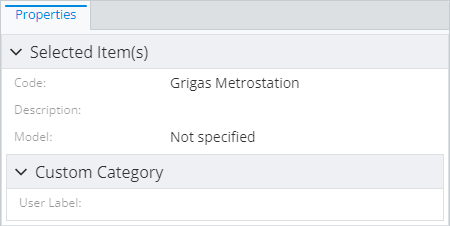
Attribute: isDisplayed
This attribute controls whether the particular property is present in the result, even when it is marked as hidden in the ECSchema. The allowed settings are:
- Omitted or
undefined: property visibility is controlled by the ECSchema. true: property is made visible. Warning: this will automatically hide all other properties of the same class. If this behavior is not desirable, setdoNotHideOtherPropertiesOnDisplayOverrideattribute totrue.false: property is made hidden.- The value can be set using an ECExpression. Warning: this will automatically hide all other properties of the same class, no matter what the expression evaluates to. If this behavior is not desirable, set
doNotHideOtherPropertiesOnDisplayOverrideattribute totrue.
| Type | boolean | ECExpression |
| Is Required | No |
| Default Value | No override |
Using isDisplayed attribute with boolean value

Using isDisplayed attribute with ECExpression value
| Ruleset variable values | Result |
|---|---|
SHOW_LABEL = false |
 |
SHOW_LABEL = true |
 |
Attribute: doNotHideOtherPropertiesOnDisplayOverride
This attribute controls whether making the property visible using isDisplayed should automatically hide all other properties of the same class. When true, this behavior is disabled.
| Type | boolean |
| Is Required | No |
| Default Value | false |
doNotHideOtherPropertiesOnDisplayOverride: false |
doNotHideOtherPropertiesOnDisplayOverride: true |
|---|---|
 |
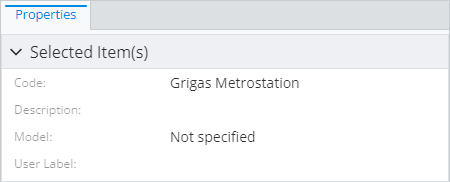 |
Attribute: renderer
Custom property renderer specification that allows assigning a custom value renderer to be used in UI. The specification is used to set up Field.renderer for this property and it's up to the UI component to make sure appropriate renderer is used to render the property.
See Custom property value renderers page for a list of available renderers or how to register a custom one.
| Type | RendererSpecification |
| Is Required | No |
| Default Value | No override |
Attribute: editor
Custom property editor specification that allows assigning a custom value editor to be used in UI.
| Type | PropertyEditorSpecification |
| Is Required | No |
| Default Value | No override |
Attribute isReadOnly
This attribute controls whether the property field is read-only. If the attribute value is not set, the field is read-only when at least one of the properties is read-only.
| Type | boolean |
| Is Required | No |
| Default Value | No override |
Attribute priority
This attribute controls the order in which property fields should be displayed. Property fields with higher priority will appear before property fields with lower priority. If the attribute value is not set, the field's priority will be the maximum priority of its properties.
| Type | number |
| Is Required | No |
| Default Value | No override |
priority: 0 |
priority: 9999 |
|---|---|
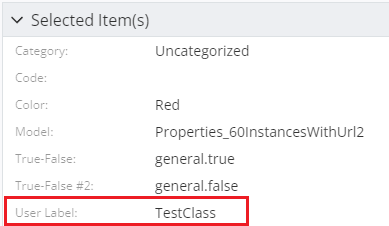 |
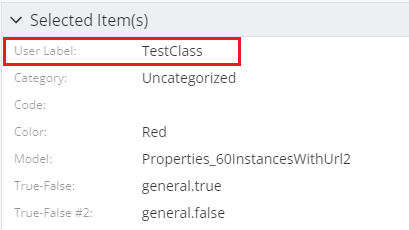 |
Last Updated: 11 June, 2025